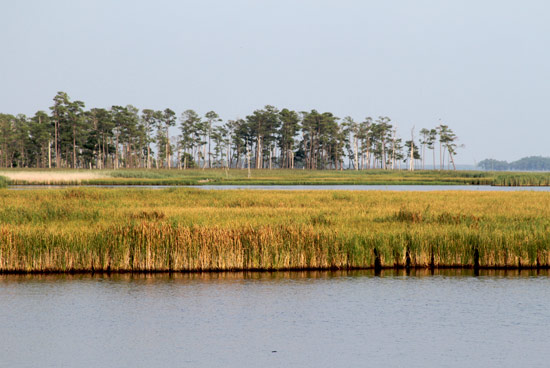Restored wetlands critical to Bay's health during hurricane season
More than 3,700 acres of wetlands were restored last year, an acreage equivalent to 2,855 football fields.
During the Atlantic Basin's six-month hurricane season, wetlands along the edges of rivers, streams and Chesapeake Bay shorelines play a critical role in maintaining healthy waters.
Storms and hurricanes like Lee and Irene in 2011 or Isabel in 2003 can have serious consequences for the Bay region, as rains wash nutrients like nitrogen and phosphorous off of farms, lawns and gardens; push sediment-laden runoff into local waterways; and inundate grass and oyster beds with suffocating silt. But this sort of storm damage is often temporary, and can be mitigated by abundant, healthy wetlands and ongoing efforts to restore them.

Wetlands stabilize shorelines, protect properties from strong waves and surging floods, soak up stormwater runoff and absorb sediment and chemical contaminants. While wetlands alone will not stop excess nutrients and sediment from reaching our waters, strong, healthy wetlands are vital to reducing the impacts of polluted runoff and supporting the Bay's resilience.
Last year, Chesapeake Bay Program partners restored more than 3,700 acres of wetlands in the Bay watershed--an acreage equivalent to about 2,855 football fields. These efforts build on the 14,765 acres of wetlands established from 1998 to 2010 and represent a solid step by Bay jurisdictions toward meeting the goal to restore 30,000 acres and rejuvenate 150,000 acres of these landscapes by 2025.

Comments
There are no comments.
Thank you!
Your comment has been received. Before it can be published, the comment will be reviewed by our team to ensure it adheres with our rules of engagement.
Back to recent stories